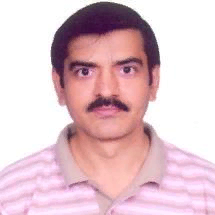
Umapada Pal
Work place: CVPR Unit, Indian Statistical Institute, Kolkata, India
E-mail: umapadapal@isical.ac.in
Website:
Research Interests: Pattern Recognition, Computer Vision, Computer systems and computational processes
Biography
Umapada Pal received his Ph.D. from Indian Statistical Institute (ISI). He did his Post-Doctoral research at INRIA, France. During July1997–January1998 he visited GSF- For schungszentrum fur Umweltund Gesundheit GmbH, Germany as a guest scientist. From January1997, he is a faculty member of the Computer Vision and Pattern Recognition Unit, ISI, Kolkata. He has published numerous research papers in various international journals, conference proceedings, and edited volumes. He received student best paper award from Chennai Chapter of Computer Society of India and a merit certificate from Indian Science Congress Association in 1995 and 1996, respectively. Dr. Pal achieved ‗ICDAR Outstanding Young Researcher Award‘fromTC-10 and TC-11 committees of IAPR in 2003. He has been serving as a guest editor, co-editor, program chair, and program committee member of many international journals and conferences. He is a life member of Indian unit of IAPR and a senior life member of Computer Society of India.
Author Articles
Graph Modeling based Segmentation of Handwritten Arabic Text into Constituent Sub-words
By Hashem Ghaleb P. Nagabhushan Umapada Pal
DOI: https://doi.org/10.5815/ijigsp.2016.12.02, Pub. Date: 8 Dec. 2016
Segmentation of Arabic text is a major challenge that shall be addressed by any recognition system. The cursive nature of Arabic writing makes it necessary to handle the segmentation issue at various levels. Arabic text line can be viewed as a sequence of words which in turn can be viewed as a sequence of sub-words. Sub-words have the frequently encountered intrinsic property of sharing the same vertical space which makes vertical projection based segmentation technique inefficient. In this paper, the task of segmenting handwritten Arabic text at sub-word level is taken up. The proposed algorithm is based on pulling away the connected components to overcome the impossibility of separating them by vertical projection based approach. Graph theoretic modeling is proposed to solve the problem of connected component extraction. In the sequel, these components are subjected to thorough analysis in order to obtain the constituent sub-words where a sub-word may consist of many components. The proposed algorithm was tested using variety of handwritten Arabic samples taken from different databases and the results obtained are encouraging.
[...] Read more.Other Articles
Subscribe to receive issue release notifications and newsletters from MECS Press journals